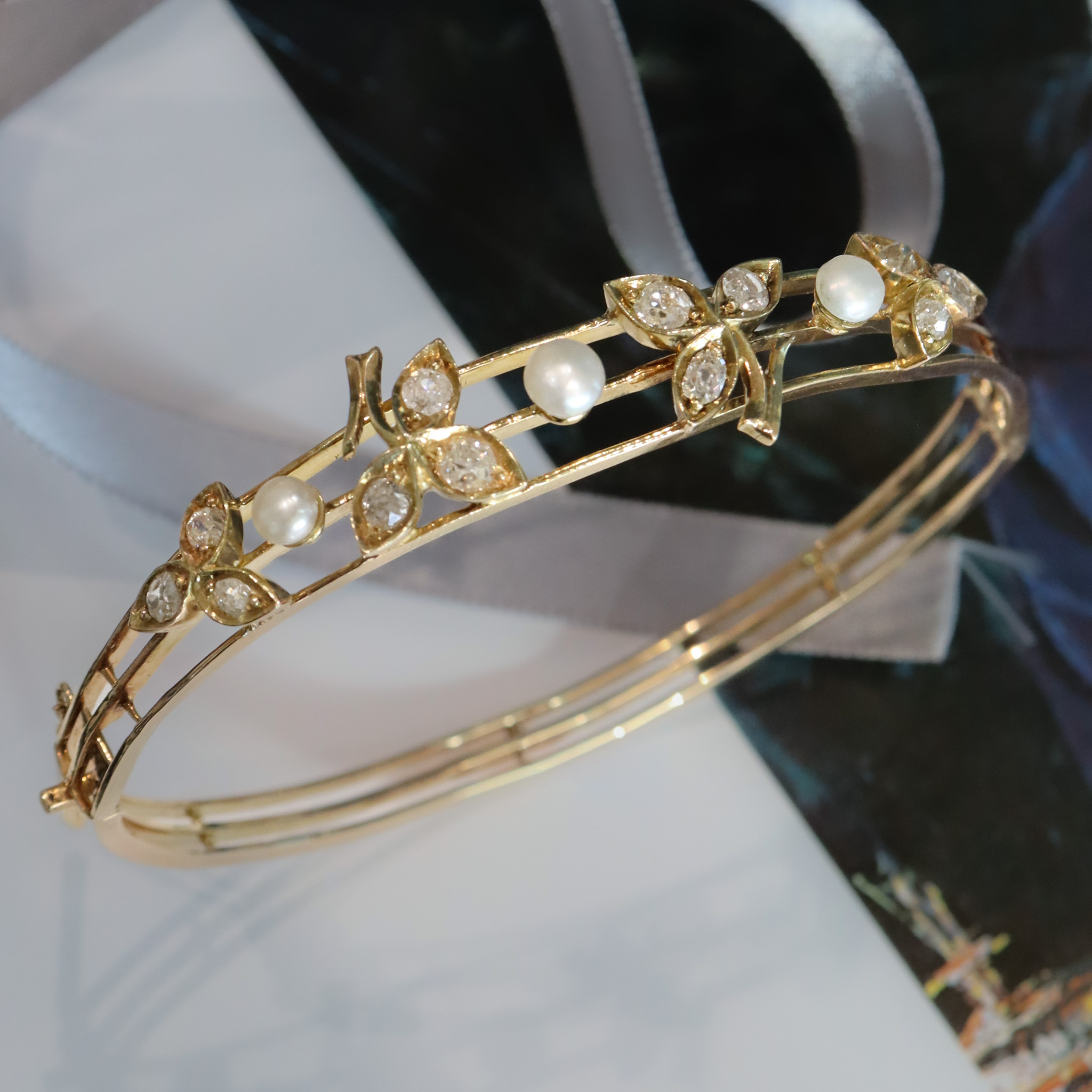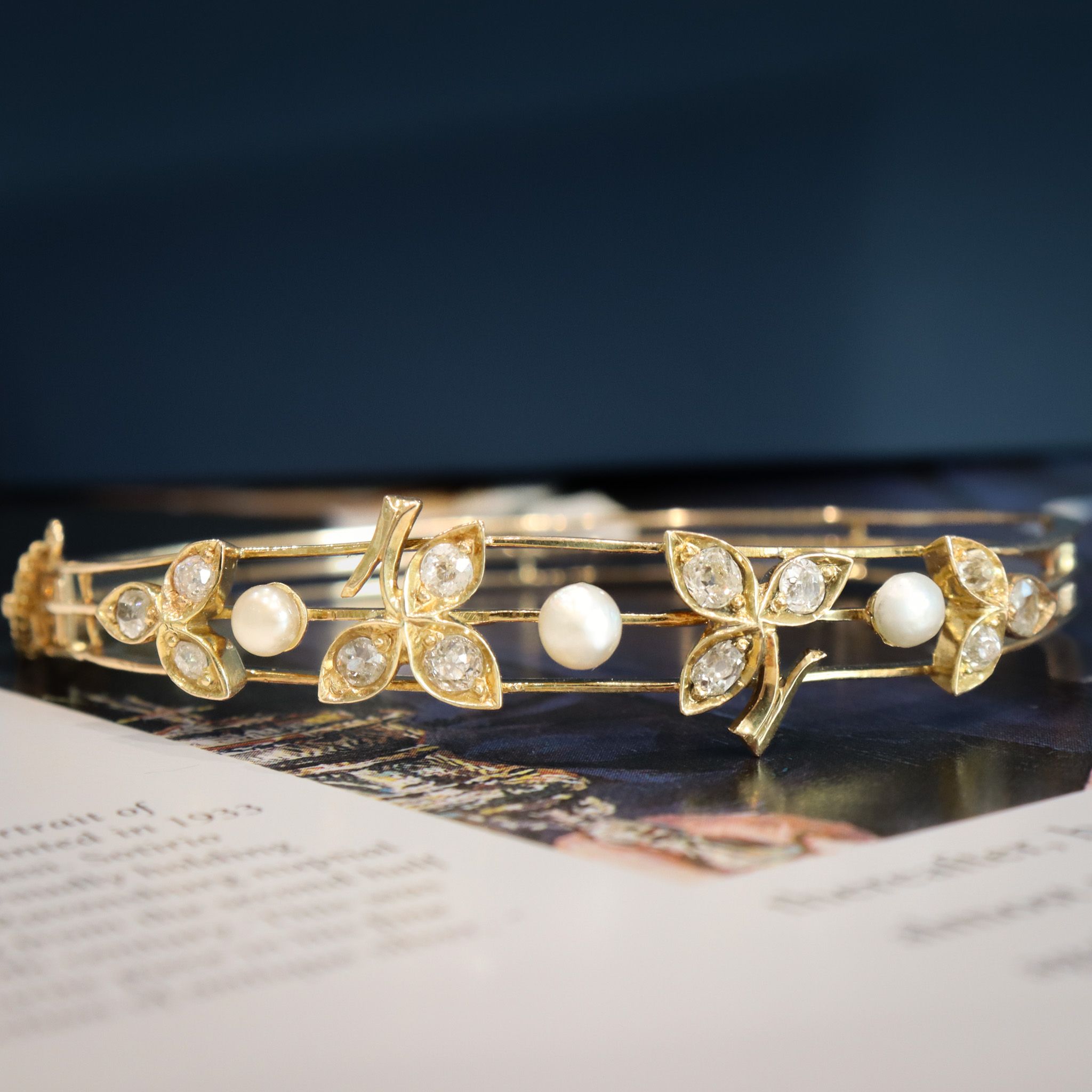15ky Art Nouveau Diamond & Pearl Ivy Bangle
Whimsical, ethereal, and impactful. This stunning bangle features a variety of old diamond cuts and screams hand-fabrication. This very special piece won't be in our showcases for very long.
Details
Contact us to us if you want more details about this piece
Want to try it on? Come visit us at Halifax, NS
Art Nouveau Era
(1890 - 1910)In response to poorly made, mass-produced Jewellery that took flight in the Victorian Era, the Arts and Crafts movement emerged. This provided the base that would support new ideas in the arts, including jewellery. Moving towards handcrafted goods and Japonisme (Japanese art & design), the two became the face of the Art Nouveau Era. The “whiplash” line, a free-flowing line used to suggest movement in jewellery, was one of the most prominent motifs of the era. It was used to depict plants, a woman’s hair- essentially any moving part of nature. Recurrent themes included insects, notably dragonflies and butterflies. Plique-A-Jour enamel became popular and was used to provide colour and life to pieces. This enamel style was akin to stained glass windows, with transparent enamel outlined by gold or silver. Art Nouveau jewellers loved the idea of the female form being combined with elements from nature, such as a woman with butterfly wings. Trailblazing jewellers such as Tiffany, Rene Lalique, and Henri Vever dominated the unique style of this era. The aftermath of World War I had the public leaning away from natural lines, and towards the sharp angles of Art Deco. Although short lived, the Art Nouveau era is remembered for its innovation and craftsmanship.
Diamond - Carbon




